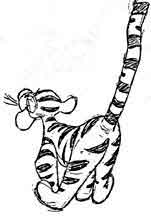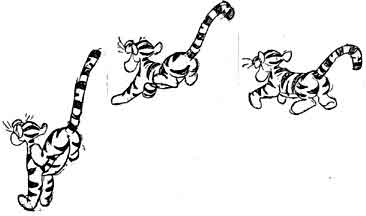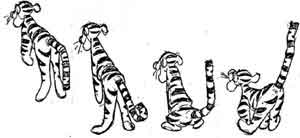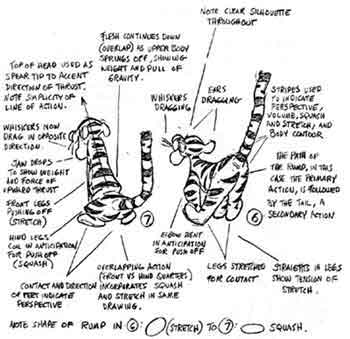
Principles of Animation
28 Principles of Animation
This article was given to me by Mark Kennedy (storyboard artist on Hercules and Tarzan). Thank you Mark for all those handouts!!
Often times animators and storyboarders in the industry are able to get handouts from some of the artists who are great teachers. This is an example of such kind of handout that gets circulated among the artists gradually. It took me quite a while to retype and scan the images from this handout. Please don't reproduce this on the internet without permission. (if you'd like to print it out and give it to another animation student, however, PLEASE do!) The entire article from here on out is by Walt Stanchfield (sp?) I included the images in approximately the same spot as they were on the original hand-written article.
This is a wonderful article for not only beginners but also for practiced animators. Please read it.
There are some principles of animation that can be consciously used in any scene. We should familiarize ourselves with them for both animation and animation-cleanup.
To illustrate these principles, I have chosen a supposedly simple scene. When the scene is analyzed, it is apparent how far one may go in using these principles.
The action in this scene is quite broad, making the principles easy to find, but they should be applied to subtle scenes also. Rarely in a picture is a character doing nothing- absolutely nothing. Snow White and Sleeping Beauty spend a short time in complete inactivity, but even then certain of these principles were used.
The use of held drawings and moving holds can be very effective, but only if they contain the vitality of an action drawing. Again, the use of these principles makes that possible.

28 Principles of Animation
The purpose of studying and analyzing a scene like this is to
acquaint oneself with the possibilites in the use of the principles of animation.
I have listed 28 principles, though there well may be more. At first these will have to be used consciously,
then hopefully in time will become second nature. These are the tools of animation and should be incorporated
whenever possible. Some of them are accidentally stumbled upon while animating in an emotional spurt, but when
the emotions are lax, knowing these principles will enable the artist to animate his scene intellectually, logically
and artistically as well as emotionally.

28 Principles of Animation
Here is a list of things (principles) that appear in these drawings, most of which should appear in all scenes, for they comprise the basis for full animation
|
|
|

28 Principles of Animation
An example of the observations that might be made by flipping and studying just these two drawings. By shifting your eyes from one drawing to the other you can see these things happening. Watch the negative shapes also.





